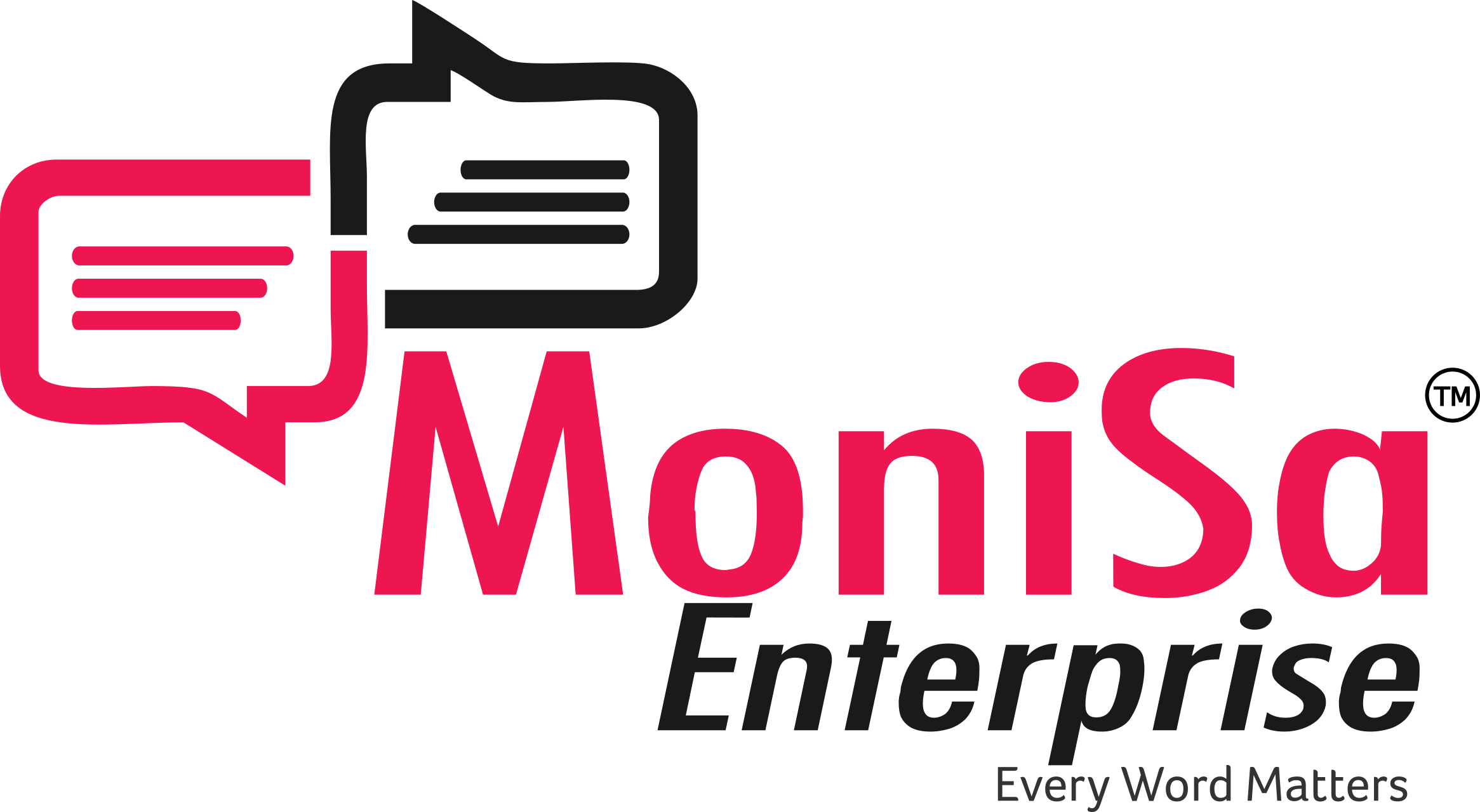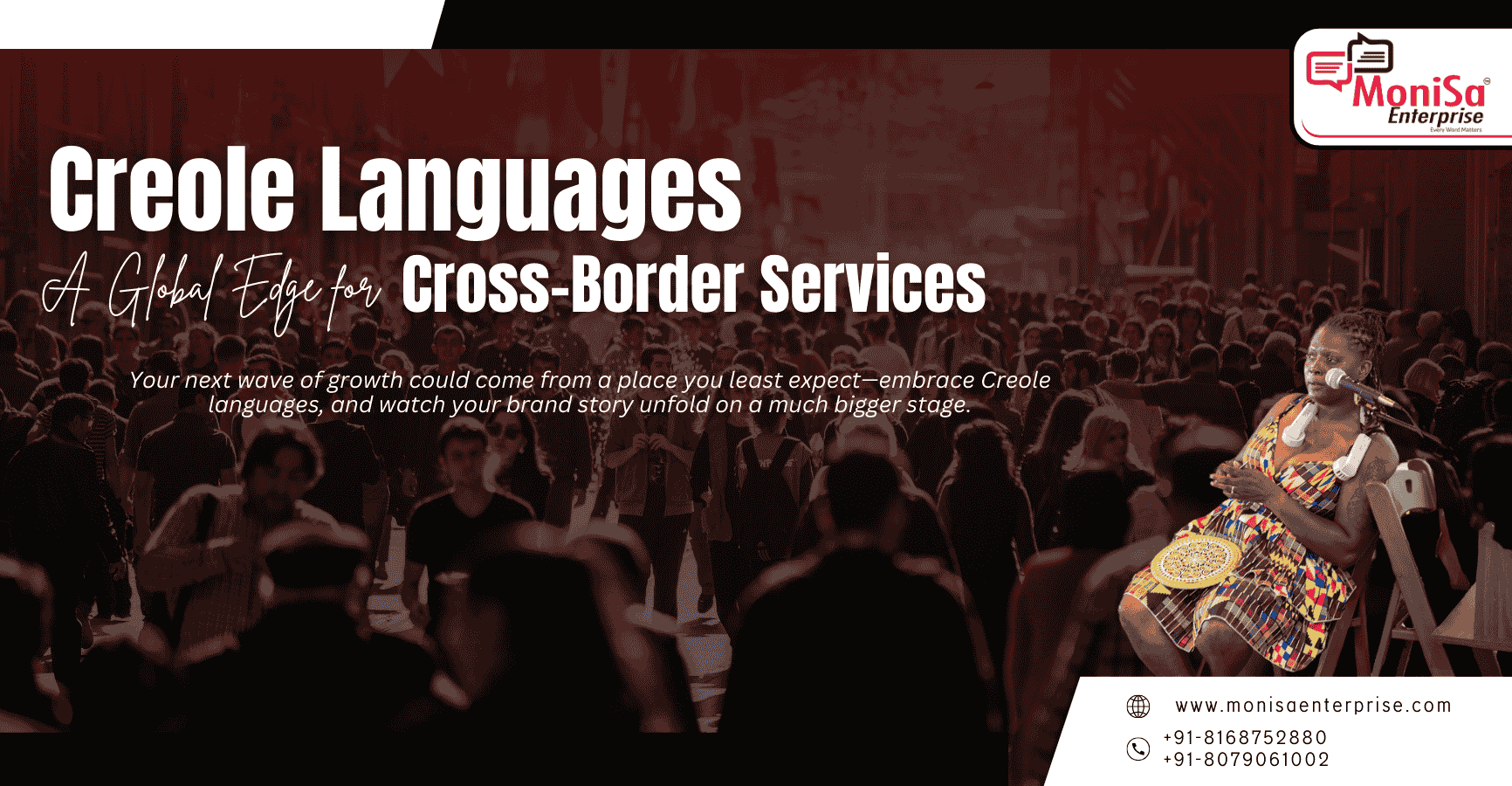Introduction : Creole Languages
Table Of Contents
- 1 Introduction : Creole Languages
- 2 What Are Creole Languages?
- 3 Types of Creole Languages & Their Regional Trade Significance
- 4 Socioeconomic Relevance of Creoles Today
- 5 Creole Languages in Global Trade
- 6 Cross‑Border Services & Multilingual Needs
- 7 Creole as a Tool of Cultural Diplomacy
- 8 Future Outlook & Business Opportunity
- 9 MoniSa Enterprise in Action
- 10 Conclusion
Over 10 million people speak Haitian Creole worldwide, yet many global players still treat it as an afterthought Are you missing out?
It hurts ignoring an entire market that’s hungry for products and services in their mother tongue.
Now imagine your competitors swooping in, winning loyalty, and driving up remittances, tourism bookings, and e‑commerce conversions—while you stay stuck with English‑only content.
Here’s the kick: treat Creole languages as strategic assets, not barriers.
In this post, you’ll discover how Creoles from Haitian Kreyòl to Jamaican Patois—serve as cultural and economic bridges, and how MoniSa Enterprise can power your next leap in localization, customer engagement, and cross‑border services.
What Are Creole Languages?
Creoles are fully fledged languages that arise when diverse communities mix tongues—think of them as “melting‑pot” idioms with their own grammar and vocabularies. Far from “broken” or “simplified” speech, Creoles follow stable, rule-governed systems shaped by colonization, trade, slavery, and migration.
- Linguistic Features: Creoles often blend lexicon from a dominant language (French, English, Portuguese) with grammar from substrate languages (West African, Austronesian, Indigenous American).
- Origins: They emerged in ports, plantations, and mission stations—where speakers of different mother tongues needed common ground.
- Misconceptions: No, they’re not “slang” or “baby talk.” Haitian Creole boasts an Academy; Jamaican Patois has published literature; Tok Pisin is a national language.
Types of Creole Languages & Their Regional Trade Significance
A. Atlantic Creoles
- Haitian Creole (10–12 million speakers) is one of Haiti’s two official languages, dominating daily life, media, and commerce.
- Papiamento (≈350 000 speakers), official in Aruba, Curaçao, Bonaire, underpins tourism, remittances, and fintech in the Dutch Caribbean.
- Economic Role: Hospitality groups using Papiamento microsites saw booking rates climb by 18% in Curaçao.
B. Pacific Creoles
- Tok Pisin (~3–5 million speakers, mostly as L2) is Papua New Guinea’s lingua franca in mining, aid logistics, and national media.
- Bislama (≈218 000 speakers) is Vanuatu’s working language for politics, commerce, and education.
- Trade Importance: Mining contractors report 25% fewer safety incidents after rolling out manuals in Tok Pisin.
C. Indian Ocean Creoles
- Mauritian Creole (spoken by nearly 1.25 million people in Mauritius) is the everyday medium in textile, seafood export, and eco‑tourism sectors.
- Key Benefit: Localization into Mauritian Creole boosted local brand recall by 32% in recent surveys.
D. Afro‑Asian Creoles
- Sri Lanka Indo‑Portuguese Creole remains in the hands of a few thousand Burgher descendants (≈2 220 speakers in 2011) and echoes a bygone maritime trade network.
- Niche Role: Ideal for heritage tourism and cultural‑diplomacy initiatives around Batticaloa’s Burgher festivals
E. Plantation Creoles
- Jamaican Patois (≈3.2 million speakers) drives music, entertainment, and diaspora commerce in South Florida, NYC, London, and beyond.
- Gullah (<300 000 speakers) connects communities along the U.S. Southeast Coast, fueling cultural tourism.
Contemporary Reach: Brands dabbling in reggae‑inspired campaigns must nail the “Wah gwaan?” hook—anything less feels inauthentic.
Socioeconomic Relevance of Creoles Today
Creole languages aren’t just niceties; they’re engines of economic inclusion. When governments recognize Haitian Creole in schools, literacy climbs. And you? By embracing Creoles, you decrease support costs, slash miscommunication, and earn community goodwill.
- Daily Transactions: From Haitian street markets to Cape Verdean ferry terminals, Creoles are the de facto languages of small‑business trust.
- Education & Policy: Where Creole is recognized (Haiti since 1987), literacy rates climb and civic engagement soars.
- Digital & Social Media: Creole hashtags (#KreyolPower, #PatwaVibes) top regional Twitter trends during festive seasons.
You can’t talk to your audience if you’re not speaking their language—literally.
Creole Languages in Global Trade
MoniSa builds custom glossaries and trains models on real‑world corpora—so your chatbots won’t reply with “Sorry, I no savvy that.”
- Local Customer Engagement: Financial services that roll out Creole‑support chatbots enjoy 40% higher form‑completion rates.
- Logistics & Transport: Ports in Abidjan, Douala, and Noumea see smoother operations when shift‑briefings are delivered in local Creoles.
- Case Examples: MoniSa helped a PNG mining client translate safety protocols into Tok Pisin, driving a 22% drop in incident reports within six months.
Cross‑Border Services & Multilingual Needs
Want to crack open cultural export opportunities?
Creoles are your backstage pass. Reggae, zouk, Mauritian sega—music and film in these languages create global buzz, raising brand awareness in unexpected places. MoniSa Enterprise helps you craft storytelling campaigns that feel native, not stitched‑on.
- Remote Work & Outsourcing: Creole‑speaking agents excel in telehealth and customer support for diaspora markets.
- Tech & Translation: Creoles are often under‑represented in NLP.
- Public Services: Health campaigns in Haitian Creole boosted vaccination sign‑ups by 30% in urban areas.
Creole as a Tool of Cultural Diplomacy
Here’s where it gets exciting. Voice assistants, chatbots, even AR‑driven tours in Creole are on the rise. Early adopters will capture first‑mover loyalty and set the tone for digital experiences in these markets.
- Soft Power: Music (compas, reggae), film, and literature in Creole reshape global perceptions—and open doors for cultural exports.
- Diaspora Connections: Brands leveraging Patwa‑infused ads are seen as “authentic” by Jamaican communities in Toronto and Miami.
- Institutional Recognition: UNESCO’s endorsement of Haitian Creole as an “intangible cultural asset” sets the stage for funded localization projects.
Future Outlook & Business Opportunity
Insider tip: Don’t just translate—transcreate. Work with native speakers who know the local slang (“Ki jan?”, “Wah gwaan?”, “Allé?”) and cultural touchpoints. A glossary alone won’t cut it; you need community validators, in‑country QA, and iterative feedback loops.
- AI & Localization: Voice assistants, chatbots, and apps in Creole are on the rise—early adopters will capture first‑mover loyalty.
- Inclusive Growth: Investing in Creole access yields higher engagement, lowers support costs, and fosters brand trust.
- Factors Influencing Adoption:
- Policy & Education: Governmental endorsement accelerates uptake.
- Tech Infrastructure: Mobile‑first markets demand chat‑based localization.
- Diaspora Remittances: Creole‑enabled fintech taps into a $100 billion market.
MoniSa Enterprise in Action
- Challenge: A Caribbean tourism board saw a 12% drop in bookings from Aruba and Curaçao.
- Solution: MoniSa deployed a Papiamento localization drive—microsites, social ads, and chat support.
- Outcome: Bookings rebounded +25% QoQ, site‑interaction time rose 40%, and NPS among local users hit 8.9/10.
Conclusion
Creoles aren’t “nice‑to‑have”—they’re must‑have bridges to millions of consumers, partners, and remote workers. In a world chasing new markets, the key might just be the voices you’re not hearing enough.
What Creole‑language challenge keeps you up at night?
Drop a comment or reach out to MoniSa Enterprise, and let’s turn it into your next competitive advantage.


